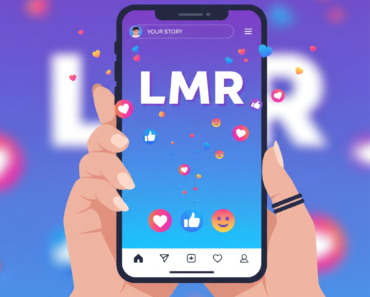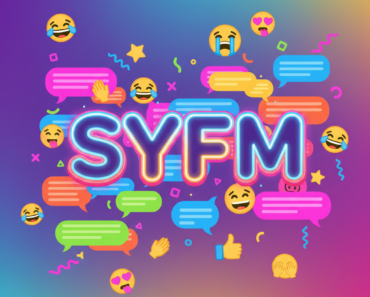If you’ve been scrolling through TikTok, Twitter (now X), Instagram, or even Snapchat, you may have stumbled across the term “OOMF” in captions, tweets, or comments. It’s one of those internet slangs that seems confusing at first glance, but once you understand it, it’s simple and often pretty relatable.
In this article, we’ll dive deep into what OOMF means in social media slang, how it’s used on platforms like TikTok, Instagram, Twitter, and Snapchat, and why Gen Z and millennials love using it. We’ll also cover examples, variations, and the cultural significance of OOMF in today’s digital communication.
What Does OOMF Mean?
OOMF stands for “One Of My Followers” or “One Of My Friends”
It’s a casual internet acronym used to talk about a follower, friend, or sometimes even a crush on social media without naming them directly. Originally popularized on Twitter, the term quickly spread across TikTok, Instagram, and other platforms, where people often prefer indirect communication for humor, shade, or subtle confessions.
For example:
“OOMF keeps liking my TikToks at 3 a.m. 👀”
“Can’t believe OOMF ghosted me after we made plans 😒.”
“Lowkey, OOMF is kinda cute.”
Here is a wonderful video thats is discussing OOMF slang in everyday use –
The term gives people a way to hint or vent about someone while still keeping their identity anonymous. This makes it perfect for vagueposting, subtweeting, or TikTok captions where you want to spill tea without saying names.
“OOMF” is short for One of My Followers or One of My Friends, and while it first gained traction on Twitter, it has now spread its wings across TikTok, Instagram, and Snapchat. The beauty of this slang lies in its indirectness — people often use it to flirt, vent frustrations, crack a joke, or even throw a little shade without calling anyone out directly. Over time, fun variations like OOMFS, MOOMF, and OOMFIE have popped up, adding more flavor to online chatter. What makes it thrive is its clever vagueness: it’s broad enough to be relatable, yet mysterious enough to spark curiosity, making conversations feel lighter, playful, and endlessly engaging.
What is the Origin of the OOMF Slang?
OOMF first appeared in the early 2010s on Twitter, which was notorious for spawning internet slang and acronyms like TBH (to be honest), DM (direct message), and FYP (for your page).
People would use OOMF when subtweeting (tweeting indirectly about someone without tagging them). For example:
“Wish OOMF would notice me already.”
“OOMF is always starting drama.”
From there, OOMF migrated to Tumblr, Instagram, Snapchat, and TikTok, where anonymity and subtlety are part of the culture. The term continues to thrive because people love dropping hints and sharing feelings without fully exposing themselves.
Why Gen Z on social media loves to use OOMF slang?
Gen Z loves “OOMF” because it’s a compact, flexible code for fast-moving feeds. In just 4 letters with 2 common expansions (One Of My Followers/Friends), it lets people speak to a crowd while addressing exactly 1 person—perfect for 280-character posts and swipe-by attention. It thrives across at least 3 major arenas—TikTok, Instagram, and Snapchat—where indirect shout-outs fuel flirting, venting, humor, and shade without @-ing anyone.
The ambiguity is the feature: it protects privacy, reduces drama, and boosts engagement because everyone wonders, “Is that about me?” Variants like OOMFS, MOOMF, and OOMFIE add 3+ playful tones for different contexts. In 24-hour story cycles, OOMF acts like a social nudge that’s light, low-risk, and instantly relatable.
For a generation (born ~1997–2012) raised on quick replies and group dynamics, OOMF delivers maximum social signal with minimal characters—efficient, mysterious, and fun.
How OOMF Slang is Used on Different Social Media Platforms?
Although OOMF means the same thing across platforms, the way it’s used varies slightly depending on the social media app.
1. TikTok
On TikTok, OOMF often shows up in captions or comments, especially in relatable storytime videos. For example:
“Not me writing this knowing OOMF is watching 👀.”
“When OOMF sees this TikTok and realizes it’s about them 💀.”
Creators use it to add suspense or inside jokes, and audiences love guessing who the “OOMF” might be.
2. Twitter / X
Twitter is where OOMF was born and is still most commonly used. Subtweets about OOMF can range from funny to petty to romantic. For example:
“OOMF needs to chill with those cryptic tweets.”
“Not OOMF thinking I wouldn’t notice 👏.”
Here, it’s often used for subtweeting — calling someone out indirectly.
3. Instagram
On Instagram, OOMF often appears in captions, comments, or even DMs. For instance:
“OOMF keeps viewing my stories first every time 👀.”
“Wondering if OOMF will like this post or ignore me again.”
It plays into the platform’s culture of likes, stories, and indirect hints.
4. Snapchat
Snapchat users use OOMF when talking about someone who’s been snapping or leaving them on opened. For example:
“Why does OOMF keep sending streaks but never replies to my messages?”
“OOMF’s private story is wild.”
A Few Examples of OOMF in Action
To really understand OOMF, let’s look at more practical examples across contexts:
Flirting/Crushes: “OOMF doesn’t even know they’re my lockscreen 💕.”
Venting/Frustration: “OOMF really had the audacity to cancel last minute 😤.”
Friendship: “Love how OOMF always hypes me up in the comments.”
Humor: “OOMF swears they’re lowkey but posts 10 stories a day 😂.”
Shady/Indirect: “Can’t believe OOMF thinks we don’t notice their fake vibes.”
Variations of OOMF
Like most social media slang, OOMF has evolved into playful variations that suit different tones and contexts. One common form is OOMFS, which serves as the plural, meaning “one of my followers” in a group sense, often used when referring to multiple people at once—for example, “Can’t believe OOMFS are still arguing in the comments.”
Another version is MOOMF (“My One Of My Followers”), which adds a possessive twist, usually when expressing a closer bond or ownership vibe, such as “MOOMF always hypes me up.”
Goodnight oomfie text
A goodnight oomfie text often expresses warmth, appreciation, or simple well-wishes, helping to strengthen online bonds without being overly personal. It can include kind words, positive vibes, or short reflections on the day, making it a subtle way to stay connected and end conversations on a thoughtful, friendly note.
Perhaps the most popular variation is OOMFIE, a cutesy affectionate form that people use when referring to a crush, bestie, or someone they find adorable—like “Goodnight, oomfie 🫶.” These variations not only showcase the flexibility of internet slang but also reflect how online communities adapt acronyms to express intimacy, humor, or shade in creative ways.
One of the Example of OOMF:
“Love you, oomfie 😭💖.”
Below are a few more variations of goodnight oomfie text –
- “Goodnight, oomfie 🌙 Hope you have the most peaceful sleep tonight.”
- “Ending the day by wishing my oomfie sweet dreams and calm thoughts.”
- “Goodnight, oomfie! May tomorrow be brighter and better.”
- “Just stopping by to say goodnight, oomfie. Rest well.”
- “Goodnight, oomfie ✨ Thank you for being such a positive presence.”
- “Hope your night is cozy and your sleep is deep. Goodnight, oomfie.”
- “Sending gentle vibes and kind thoughts your way. Goodnight, oomfie.”
- “No matter how today went, you did your best. Goodnight, oomfie.”
- “Goodnight, oomfie 🌌 Wishing you calm dreams and a fresh start tomorrow.”
- “Logging off the day with a simple goodnight for my oomfie.”
These variations show how slang evolves and adapts depending on context, mood, or community. Which variation would you love to use in your communications? Let us know in the comments section 🙂
OOMF vs. Other Social Media Slang
To avoid confusion, it’s worth noting that OOMF isn’t the only acronym in this space. Here’s how it compares:
FYP (For You Page) – TikTok-specific, unrelated to followers.
DM (Direct Message) – Refers to private messages, not followers.
Mutuals – Refers to someone who follows you back, while OOMF just means any one follower.
Stan – Means a superfan, not just a follower.
OOMF is unique because it’s casual and vague, keeping the person’s identity hidden.
How the Culture has Impacted the OOMF Slang Across the Globe?
Slang like OOMF represents the way online culture has reshaped communication. Instead of calling people out directly, we rely on playful, cryptic language that sparks curiosity.
For Gen Z and younger millennials, it’s also a way to maintain privacy while still sharing feelings. In a world where oversharing is common, OOMF lets people be specific without being too specific.
It also highlights the power dynamics of social media — the way followers, likes, and interactions affect friendships, relationships, and self-expression.
What does oomf mean in a relationship?
In a relationship, OOMF usually means “One of My Followers” or “One of My Friends”, but its meaning takes on a more personal, romantic twist. When someone uses OOMF while they’re dating or interested in someone, it often acts as a playful and indirect way of referring to their partner or crush without explicitly naming them. For example, a person might tweet, “Can’t wait to see OOMF tonight 😍”, hinting at their significant other while keeping the identity private. This keeps the conversation light, mysterious, and fun—especially in the early stages of dating where subtle hints are more exciting than direct declarations.
In some cases, people also use OOMF to vent about a partner without calling them out directly, like “Wish OOMF would actually text back faster 🙄.” Essentially, in relationships, OOMF functions as a mix of affection, secrecy, and playful indirectness that keeps others curious.
Is oomfie flirty?
Yes, OOMFIE often carries a flirty and affectionate vibe. While OOMF feels vague or neutral, adding the “-ie” makes it sound softer, cuter, and more personal—almost like a pet name. For example, someone might post, “OOMFIE looked so good today 😍” or “Missing OOMFIE already 🥺.” On social media, it’s frequently used in a teasing or romantic context, especially when referring to a crush or significant other, making it a playful, flirty twist on the original slang.
Is oomf bad?
No, OOMF isn’t bad—it’s just internet slang that stands for “One of My Followers” or “One of My Friends.” Its meaning depends on the context. Sometimes it’s used positively, like flirting or complimenting someone without naming them. Other times, it might carry shade or mild criticism, such as “OOMF needs to chill.” Because it’s vague, people can interpret it in different ways. Overall, OOMF isn’t inherently negative; it’s more of a playful, indirect way of talking online.
Final Thoughts
The next time you see “OOMF” on TikTok, Twitter, or Instagram, you’ll know it’s just shorthand for “One of My Followers.” It’s one of those slang terms that perfectly captures how people love to talk about each other online—indirectly, humorously, and sometimes mysteriously.
Whether it’s about a crush, a bestie, or someone stirring up drama, OOMF keeps things interesting in the digital world. And who knows? Maybe you’re someone’s OOMF right now. 👀





